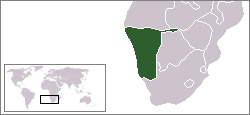
The South West Africa Territorial Force (SWATF) was an
auxiliary
Auxiliary may refer to:
* A backup site or system
In language
* Auxiliary language (disambiguation)
* Auxiliary verb
In military and law enforcement
* Auxiliary police
* Auxiliaries, civilians or quasi-military personnel who provide support of ...
arm of the
South African Defence Force
The South African Defence Force (SADF) (Afrikaans: ''Suid-Afrikaanse Weermag'') comprised the armed forces of South Africa from 1957 until 1994. Shortly before the state reconstituted itself as a republic in 1961, the former Union Defence F ...
(SADF) and comprised the armed forces of
South West Africa
South West Africa ( af, Suidwes-Afrika; german: Südwestafrika; nl, Zuidwest-Afrika) was a territory under South African administration from 1915 to 1990, after which it became modern-day Namibia. It bordered Angola (Portuguese colony before 1 ...
(now
Namibia
Namibia (, ), officially the Republic of Namibia, is a country in Southern Africa. Its western border is the Atlantic Ocean. It shares land borders with Zambia and Angola to the north, Botswana to the east and South Africa to the south and ea ...
) from 1977 to 1989.
It emerged as a product of South Africa's political control of the territory which was granted to the former as a
League of Nations
The League of Nations (french: link=no, Société des Nations ) was the first worldwide intergovernmental organisation whose principal mission was to maintain world peace. It was founded on 10 January 1920 by the Paris Peace Conference that ...
mandate following World War I.
History and background
From 1966 until 1989, South African security forces waged a long and bitter counterinsurgency conflict against indigenous nationalists in what was then South West Africa, represented by the
Marxist
Marxism is a Left-wing politics, left-wing to Far-left politics, far-left method of socioeconomic analysis that uses a Materialism, materialist interpretation of historical development, better known as historical materialism, to understand S ...
South West African People's Organisation (SWAPO) and its military wing, the
People's Liberation Army of Namibia
The People's Liberation Army of Namibia (PLAN) was the military wing of the South West Africa People's Organisation (SWAPO). It fought against the South African Defence Force (SADF) and South West African Territorial Force (SWATF) during the Sout ...
(PLAN). As the guerrilla war intensified, however, it became clear that the local civilian police alone were not enough to cope with SWAPO/PLAN incursions and escalating unrest. Consequently, military units were deployed for the first time; 60,000 South African combat troops were engaged in South West Africa by the late 1970s.
Establishment
As part of a general policy of military and social reform, Pretoria initiated the establishment of local defence and police agencies for its protectorate beginning in 1977.
Structure and activation
A start was also made with the regrouping of existing units into four formations:
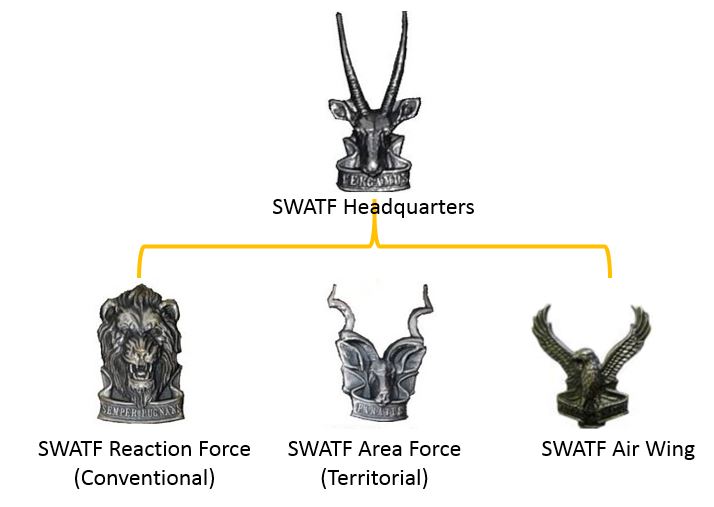
* a Formation Headquarters Staff,
* a Reaction Force (conventional),
* an Area Force (Territorial) and
* an Air Wing.
As regarding the latter, the
South African Air Force
"Through hardships to the stars"
, colours =
, colours_label =
, march =
, mascot =
, anniversaries =
, equipment ...
would remain responsible for aerial operations although provision was made for an air commando squadron consisting of private and commercially qualified air crews. Their main function was to assist the South African Air Force in reconnaissance and communication flights and to provide operational officers for the operational service.
The new South West African Territorial Force was officially created on 1 August 1980, from South West African citizens already serving with the
South African Defence Force
The South African Defence Force (SADF) (Afrikaans: ''Suid-Afrikaanse Weermag'') comprised the armed forces of South Africa from 1957 until 1994. Shortly before the state reconstituted itself as a republic in 1961, the former Union Defence F ...
.
[Modern African Wars (3): South West Africa (Men-At-Arms Series, 242) by Helmoed-Romer Heitman (Author), Paul Hannon (Illustrator) Osprey Publishing (28 November 1991) and ]
Operationally, the SWATF was further divided into a
Permanent Force
The Permanent Force was an integral part of both the South African Defence Force and the South West Africa Territorial Force which consisted of all the full-time volunteers, volunteers of Auxiliaries and national servicemen.
South Africa
The D ...
infantry component, logistic/administrative divisions, a training wing, and a
Citizen Force, which included at least three motorised infantry battalions.
The 'permanent force' comprised mostly volunteer auxiliaries and national servicemen, who formed eight battalions.
A militia system was also developed for local security, including over twenty 'area protection units'.
By 1981, SWATF's total strength numbered some 10,100 men, organised into both tribal-based battalions (including separate units for
Ovambo Ovambo may refer to:
*Ovambo language
*Ovambo people
* Ovamboland
*Ovambo sparrowhawk
The Ovambo or Ovampo sparrowhawk, also known as Hilgert's sparrowhawk, (''Accipiter ovampensis'') is a species of sub-Saharan African bird of prey in the famil ...
,
Herero
Herero may refer to:
* Herero people, a people belonging to the Bantu group, with about 240,000 members alive today
* Herero language, a language of the Bantu family (Niger-Congo group)
* Herero and Namaqua Genocide
* Herero chat, a species of b ...
, and
Coloured
Coloureds ( af, Kleurlinge or , ) refers to members of multiracial ethnic communities in Southern Africa who may have ancestry from more than one of the various populations inhabiting the region, including African, European, and Asian. South ...
ethnic groups) and multiethnic units partially manned by at least 10,000
personnel.
By 1987, SWATF had an estimated 22,000 troops, including additional units of engineers, signals personnel, mounted troops, a parachute battalion, and a commando squadron.
Training
A school cadet program similar to that in South Africa was developed for South West Africa.

Primarily all SWATF members received their initial training at 2 SA Infantry Battalion at
Walvis Bay
Walvis Bay ( en, lit. Whale Bay; af, Walvisbaai; ger, Walfischbucht or Walfischbai) is a city in Namibia and the name of the bay on which it lies. It is the second largest city in Namibia and the largest coastal city in the country. The c ...
, (considered South African territory at that stage).
Advanced training, NCOs and Officer development however occurred at the
SWA Military School at
Okhandja.

Supervision
For all practical purposes, SWATF remained firmly integrated into existing SADF command structures.
Its primary goal was protection of the territory of SWA from SWAPO incursions.
The SWATF was placed under the control of the Department of Defence for South West Africa and was always headed by a SADF general. There was also a joint SWATF/SADF committee established for "planning, liaison, and coordination" efforts.
Uniform, rank structure, corps emblems, proficiency and ops badges
The first major step in the establishment of an independent territorial defence force in SWA was the introduction of a new
nutria
The nutria (''Myocastor coypus''), also known as the coypu, is a large, herbivorous, semiaquatic rodent.
Classified for a long time as the only member of the family Myocastoridae, ''Myocastor'' is now included within Echimyidae, the family of t ...
uniform on 6 September 1979 through which SWA units could be distinguished from SADF units.


Ranks
The rank structure of the SWATF was identical to that of the SADF. The insignia however differed considerably.
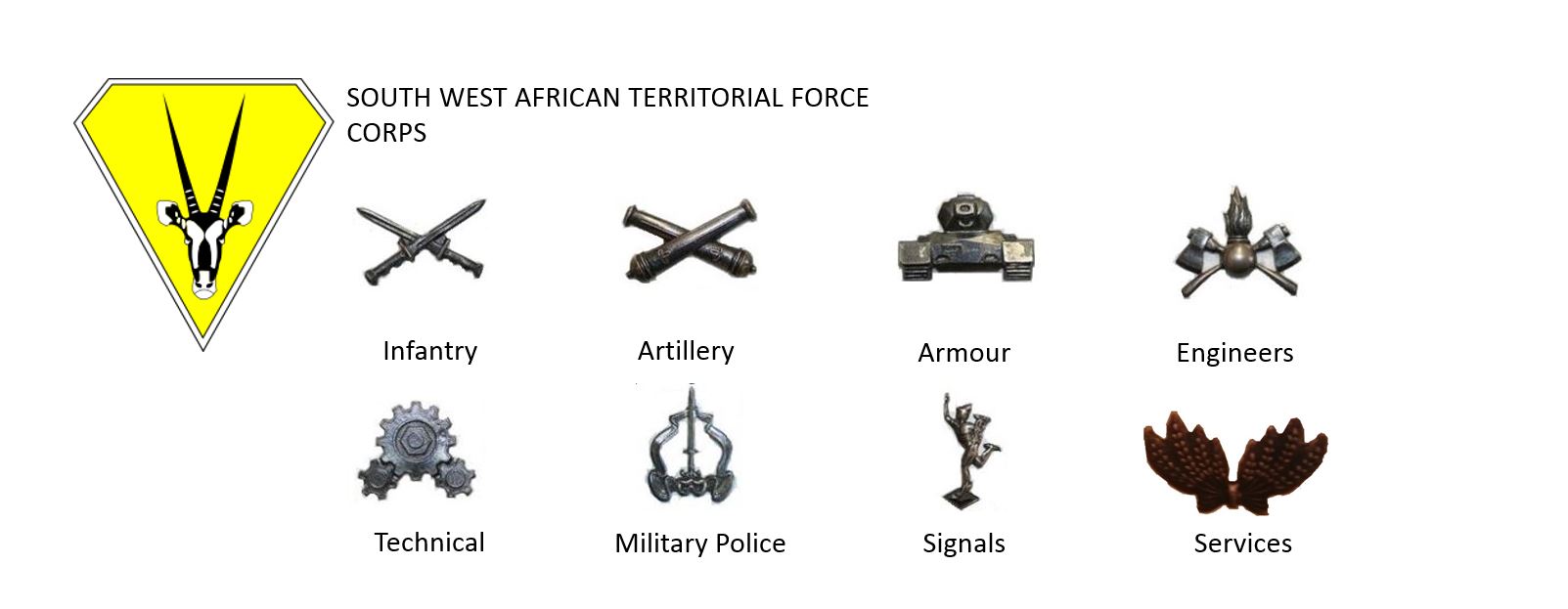


Commanders
Tactical breakdown
Headquarters Formation
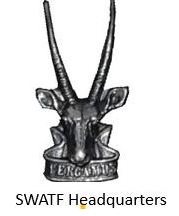
The Reaction Force

Brigade
* Reaction Force Brigade, mainly a Citizen and cross corps force, 91 Brigade had a motorised sub-brigade composing two (later three) infantry battalions, an armoured car regiment, and an artillery regiment. The Brigade also included a training battalion and a mobilisation center.


* Logistics Brigade
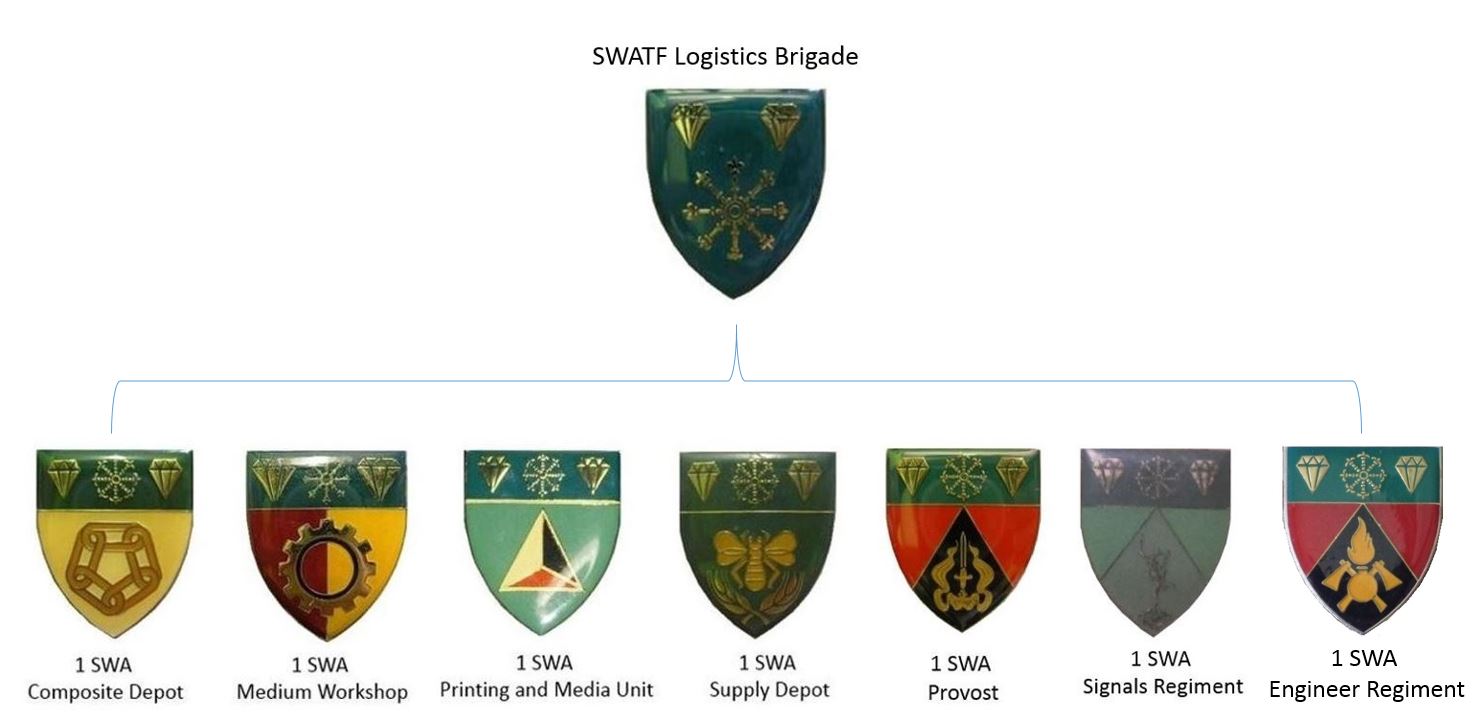
Battalions
* Eight full-time battalions
**
31 ''Bushman'' Battalion (became ''201 Battalion'') HQ at Omega Base,

**
32 Battalion at Buffalo,

** 33 Eastern
Caprivi Battalion, (became ''701 Battalion'')

** 34
Kavangoland
Kavangoland was a bantustan in South West Africa (present-day Namibia), intended by the apartheid government to be a self-governing homeland for the Kavango people. It was set up in 1970 and self-government was granted in 1973. The Kavango L ...
Battalion, (became ''202 Battalion'')

** 35
Ovamboland
Ovamboland, also referred to as Owamboland, was a Bantustan in South West Africa (present-day Namibia), intended by the apartheid government to be a self-governing homeland for the Ovambo people.
The term originally referred to the parts of ...
Battalion,
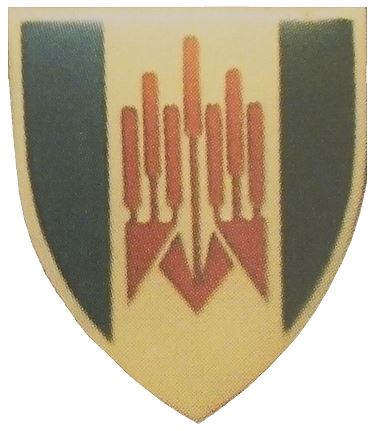
(became ''
101 Battalion'') The
Quick reaction force
In military science nomenclature, a quick reaction force (QRF) is an armed military unit capable of rapidly responding to developing situations, typically to assist allied units in need of such assistance. They are to have equipment ready to res ...
.
** 36 Bushman Battalion, (became ''203 Battalion'')
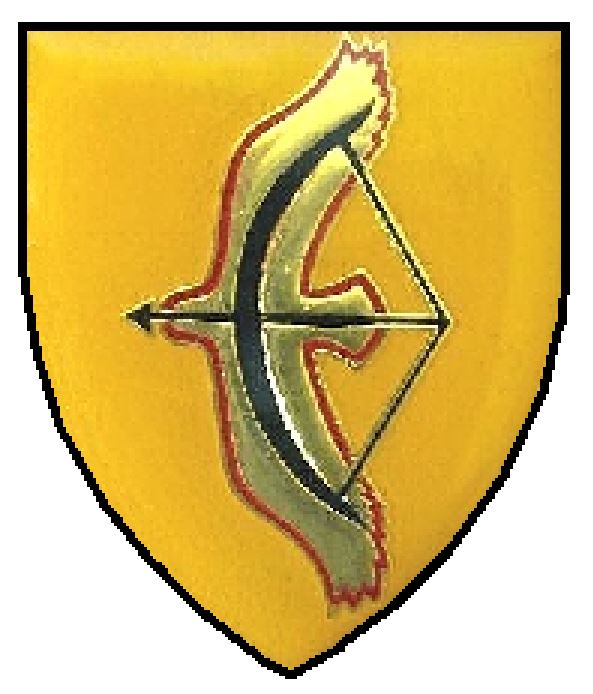
** 37
Kaokoland Battalion, (became ''102 Battalion'')

** 41 Multi-ethnic Regiment
Windhoek
Windhoek (, , ) is the capital and largest city of Namibia. It is located in central Namibia in the Khomas Highland plateau area, at around above sea level, almost exactly at the country's geographical centre. The population of Windhoek in 20 ...
(became ''911 Battalion'') (As 911 Battalion – it became known as "Swing Force" due to its ability to operate as a conventional unit or as a
Counter-insurgency
Counterinsurgency (COIN) is "the totality of actions aimed at defeating irregular forces". The Oxford English Dictionary defines counterinsurgency as any "military or political action taken against the activities of guerrillas or revolutionar ...
(COIN) unit.

It recruited from South West Africa at large and deployed predominantly as a reserve force. An infantry element, a mechanised contingent, artillery, and a regiment of
Eland armoured cars was included.
The unit was never mobilised ''en masse''.
SWATF Special Forces
Although SWATF relied heavily on South Africa's special forces, over time it developed its own capability.

*1 SWA Recon Regiment: started out as a sub unit under the command of the Commanding General SWATF in 1982, staffed mainly by ex South African operators.
* Front-line Recon Wings: most front-line battalions, such as 31, 36 and 101 also had their own Recon Wings.

*
1 SWA Specialist Unit
1 SWASpes was part of the South West African Territorial Force.
History
The South West African Territorial Force Command identified an urgent need for horse mounted and motorbike mounted units and dogs for the operational areas.
The conclusi ...
:

at
Otavi
Otavi is a town of 4,000 inhabitants in the Otjozondjupa Region of central Namibia. Situated 360 km north of Windhoek, it is the district capital of the Otavi electoral constituency.
Geography
The towns of Otavi, Tsumeb (to the north) and Gro ...
– containing trackers, dogs, horses and dirt bikes. By 1984, 1 SWA SPES was based at Omaruku and at Omathoni together with 32 Battalion's Recce Wing.
* 1 SWA Parachute Battalion: By 1987, 1 SWA Parachute Battalion and 32 Battalion's Recce Wing were amalgamated to become 2 SWA Specialist Unit or 2 SWA SPES and relocated to Luipersvallei, Windhoek.

The Area Force

South West African Military Operations Sectors
By 1979, South West Africa was subdivided into Operational Sectors. Three Frontline Sectors, 10, 20 and 70 fell under direct control of the South Africa Defence Force's
South West Africa Command. Four additional Sectors, 30, 40, 50 and 60 covered the rest of South West Africa and was commanded directly by SWATF officers from 1980.

Frontline Sectors
Frontline Sectors were used for the massing of forces in preparation for external operations into Angola, acting as a buffer with the rest of the territory and reaction to immediate threats.
Although theoretically under control of the Area Force, due to their proximity to Angola the vast majority of conventional forces was based in these areas and remained under the direct control of South West Africa Command, a SADF regional command.

Sector 10
(Kaokoland and Owambo) – HQ Oshakati
* SADF's 51 Battalion at Ruacana,
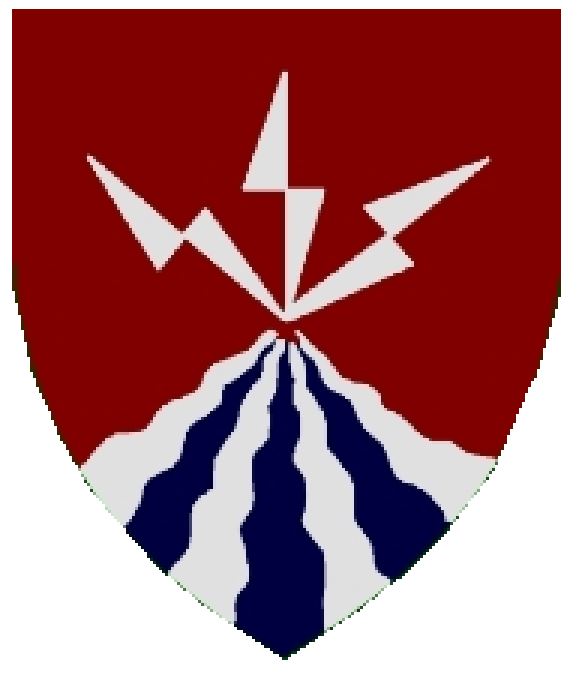
* SADF's 52 Battalion at Oshakati,

* SADF's 53 Battalion at Ondangwa,

* SADF's 54 Battalion at Eenhana,

* 101 Battalion at Ondangwa and
* 102 Battalion at Opuwa,
=Combined SADF and SWATF forces in Sector 10
=
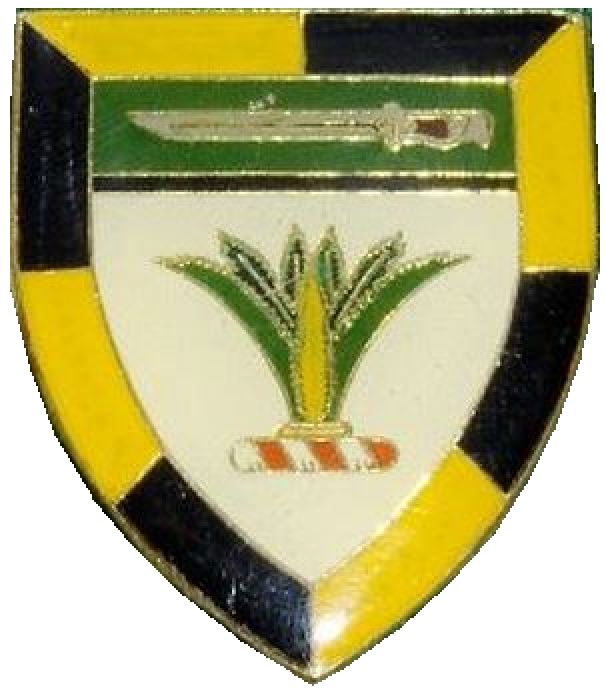
* SADF's Air Force Base Ondangwa,
* SADF's 5 Maintenance Unit at Ondangwa,
* SADF's Sector 10 Training Unit at Oshivelo,
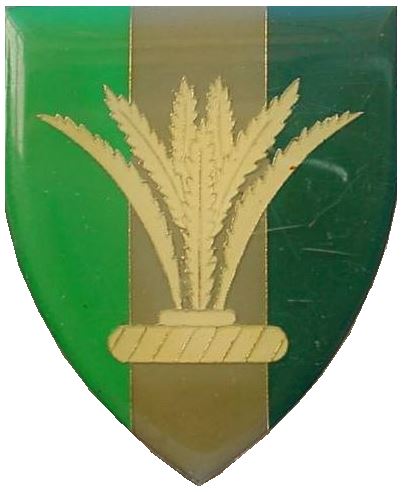
* SADF's Sector 10 Signals Unit at Oshikati,
* SADF's Sector 10 Maintenance Unit at Oshikati,
* SADF's Sector 10 Provost Unit at Oshikati,
* SADF's 25 Engineering Squadron at Oshakati, and
* SADF's
61 Mechanised Battalion Group
61 Mechanised Battalion Group was a unit of the South African Infantry Corps; although it was classed as mechanized infantry, it was a combined arms force consisting of infantry, armour and artillery.
History Combat Group Juliet
General Consta ...
at Omuthiya (although not SWATF, 61 Mech had its origins in South West Africa)
Sector 20
(Kavango and Western Caprivi) – HQ
Rundu
Rundu is the capital and largest city of the Kavango-East Region in northern Namibia. It lies on the border with Angola on the banks of the Kavango River about above sea level. Rundu's population is growing rapidly. The 2001 census counted 36,9 ...
* SADF's 55 Battalion at Nepara.

* 32 Battalion at Buffalo.

* 201 Battalion at Omega base,
* 202 Battalion at Rundu and
* 203 Battalion at Mangeti.
=Special Service Companies for quick reaction
=
These frontline Sectors also had immediate reaction forces (Special Service Companies) to deal with any attack and were primarily infantry company strength and fully motorised.
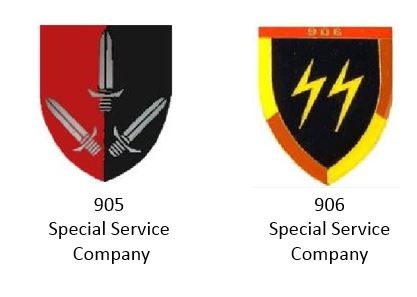
* 905 SSC was based at Nepara in Sector 20 and deployed on Buffels.
* 906 SSC was based at Omahoni in Sector 20 and deployed on Buffels. Local Kwanyama troops made up the bulk of the personnel.
=SADF units in Sector 20
=
* SADF's Air Force Base Rundu and
* SADF's 6 Maintenance Unit at Rundu.
Sector 70
(Eastern Caprivi) – HQ Mpacha
Encompassed the Eastern Caprivi covering the Zambian border from Cuado to the Zambezi River.
* SWATF 701 Battalion, at Mpacha with attached SWATF armoured car and artillery battery.

=SADF units in Sector 70
=
* SADF's Air Force Base at Mpacha,
* SADF's
Navy Marine Company utilized for river patrols, and
* SADF's 9 Maintenance Unit at Mpacha.
Countrywide Sectors
Apart from the Frontline Sectors, four additional Sectors existed. 26 Area Force Units, similar to the
South African commando system
The Commando System was a mostly voluntary, part-time force of the South African Army, but in their role as local militia the units were often deployed in support of and under the authority of the South African Police.
Mission
South Africa's ...
, was established for these less vulnerable parts of the territory.
Sector 30
HQ Otjiwarongo (Citadel).
* 301 Bn at Otjiwarongo.

SWATF Otjiwarongo AME (Area Force Unit – ''Area Mag Eenheid''), Outjo AME, Grootfontein AME, Tsumeb AME, Herreroland AME, Ethosa AME, Otavi AME, Damaraland AME and UIS PL. Its area of responsibility was likewise the Grootfontein, Tsumeb, Otavi, Outjo, Otjiwarongo, Hereroland and Damaraland regions.

=SADF Units in Sector 30
=
* SADF's Air Force Base Grootfontein
* SADF's Northern Logistics Command at
Grootfontein
, nickname =
, settlement_type = City
, motto = Fons Vitæ
, image_skyline = Grootfontein grass.jpg
, imagesize = 300px
, image_caption =
, image_flag =
, flag_si ...
comprising:
** NLC 101 Workshop
** NLC Provost Unit
** NLC 6 Signals Unit
** NLC 16 Maintenance Unit
Sector 40
HQ Windhoek.
SWATF Alte Feste AME, Khomas AME, Hochl AME, Okahandja AME, Omaruru AME, Swakopmund AME, Rehoboth AME, Katatura AME and Khomasdal AME.

Other Units in this Sector:

* Regiment Windhoek
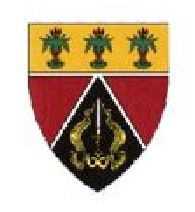
* 1 SWA Provost Unit
Sector 50
HQ Gobabis.
SWATF Aranos AME, Auob AME, Bo-Nossob AME, Aminius PL, Gobabis AME, Rietfont AME, Mariental AME and Maltahohe AME.

Sector 60
HQ Keetmanshoop.
SWATF Karasburg AME, Keetmanshop AME, Hoop AME, Bethanien AME, Oranjemund AME, Luderitz AME and Namaland AME.

Air Wing
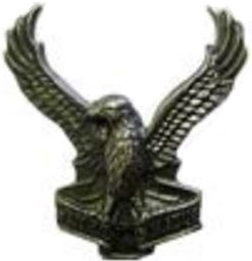
Aircrews
While the SWATF relied heavily on the South African Air Force for combat and heavy logistics transportation, it did have its own Air Wing, which consisted mainly of civilian aircraft.

1 SWA Commando Squadron was established as 112 Air Commando on 24 September 1963 in Windhoek. The unit was staffed by volunteer civilian aircraft. From 1968, control of 112 Commando squadron passed from the SA Army to the SAAF and it was transferred to Light Aircraft Command.
In 1970, it was disbanded, but in 1980 it was re-established as part of the SWATF.

Medical Command

Equipment
Small arms
Vehicles
Armoured
*
Buffel
The Buffel (English: ''Buffalo'') is an infantry mobility vehicle used by the South African Defence Force during the South African Border War. The Buffel was also used as an armoured fighting vehicle and proved itself in this role. It replaced ...
APC/
MRAP
Mine-Resistant Ambush Protected (MRAP; ) is a term for United States Armed Forces, United States military light tactical vehicles produced as part of the MRAP program that are designed specifically to withstand improvised explosive device (IE ...
*
Casspir
The Casspir is a Mine-Resistant Ambush Protected Vehicle that has been in use in South Africa since the 1980s. It is a four-wheeled, four-wheel drive vehicle, used for transport of troops. It can hold a crew of two, plus 12 additional soldiers an ...
APC/MRAP
*
Eland Mk7
The Eland is an air portable light armoured car based on the Panhard AML. Designed and built for long-range reconnaissance, it mounts either a 60mm (2.4 in) breech-loading mortar or a Denel 90mm (3.5 in) gun on a very compact chass ...
Armoured Car
* Wolf APC manufactured by
Windhoeker Maschinenfabrik
Windhoeker Maschinenfabrik (WMF) is a Namibian defense contractor located in Windhoek, Namibia and operated by the Namibian Defence Force. WMF designs and manufactures monocoque V-hull armoured combat vehicles. WMF is responsible for the armoured ...
Soft-skinned
*
Samil 20
* Samil 50
* Samil 100
* Kwêvoël 100
Counterinsurgency
A lot of effort was used to interdict insurgent groups that had crossed over the Angolan border. These Insurgents were on foot, but knew the land and moved fast. There have been stories of the insurgents moving incredible distances with little supplies, whilst being chased and if cornered putting up a good resistance to their followers. Adrenaline injections were found at some of the incident scenes after a fire fight.
These insurgents were normally stalked by using trained trackers, who directed the reaction force. In some instances a stopper group was choppered in to cut off the insurgents before they reached the border.
Demobilisation
Under UN resolution 435, the
United Nations Transition Assistance Group
The United Nations Transition Assistance Group (UNTAG) was a United Nations (UN) peacekeeping force deployed from April 1989 to March 1990 in Namibia, known at the time as South West Africa, to monitor the peace process and elections there. Na ...
was mobilised, while SWATF was demobilised, its strength in the last years of operation was at about 22,000. Special arrangements were made for two San units of SWATF, as they originated from local tribal communities. They were thus allocated land near their previous bases.
All citizen force units were demobilised.
The SWATF was completely demobilised on 1 June 1989.
Withdrawal of some units to South Africa
UN Resolution 435 additionally called on South Africa to reduce its forces in Namibia to 12,000 before the start of any peace process and finally to 1,500 by 1989. Several thousand former SWATF members, especially from the
San people
The San peoples (also Saan), or Bushmen, are members of various Khoe, Tuu, or Kxʼa-speaking indigenous hunter-gatherer cultures that are the first cultures of Southern Africa, and whose territories span Botswana, Namibia, Angola, Zambia, ...
who feared reprisals or intimidation, left for South Africa with the withdrawing SADF.

 32 Battalion
32 Battalion, whose members to a large extent could not claim Namibian citizenship, also withdrew to South Africa completely.

See also
*
Koevoet
Koevoet (, meaning '' crowbar'', also known as Operation K or SWAPOL-COIN) was the counterinsurgency branch of the South West African Police (SWAPOL). Its formations included white South African police officers, usually seconded from the South ...
*
Namibian Defence Force
The Namibian Defence Force (NDF) comprises the national military forces of Namibia. It was created when the country, then known as South West Africa, gained independence from South Africa in 1990. Chapter 15 of the Constitution of Namibia establ ...
*
South West African Police
The South West African Police (SWAPOL) was the national police force of South West Africa (now Namibia), responsible for law enforcement and public safety in South West Africa when the territory was administered by South Africa. It was organised ...
(SWAPOL)
References
Further reading
Overview of the rank insignia used by SWATF* The SADF, A Survey. Supplement to the Financial Mail July 10, 1987 Introducing the SWATF.
* Wolfgang Reith: Die Südwestafrikanischen Territorialstreitkräfte SWATF 1980–1989, Namibia 2015,
{{SA Army Units
Armies by country
Military units and formations of the Cold War
Military units and formations of South Africa in the Border War
Military units and formations established in 1977
Military units and formations disestablished in 1989
 The South West Africa Territorial Force (SWATF) was an
The South West Africa Territorial Force (SWATF) was an  * a Formation Headquarters Staff,
* a Reaction Force (conventional),
* an Area Force (Territorial) and
* an Air Wing.
As regarding the latter, the
* a Formation Headquarters Staff,
* a Reaction Force (conventional),
* an Area Force (Territorial) and
* an Air Wing.
As regarding the latter, the  Primarily all SWATF members received their initial training at 2 SA Infantry Battalion at
Primarily all SWATF members received their initial training at 2 SA Infantry Battalion at 








 * Logistics Brigade
* Logistics Brigade

 ** 32 Battalion at Buffalo,
** 32 Battalion at Buffalo,  ** 34
** 34  ** 35
** 35  (became '' 101 Battalion'') The
(became '' 101 Battalion'') The  ** 37 Kaokoland Battalion, (became ''102 Battalion'')
** 37 Kaokoland Battalion, (became ''102 Battalion'')  ** 41 Multi-ethnic Regiment
** 41 Multi-ethnic Regiment  It recruited from South West Africa at large and deployed predominantly as a reserve force. An infantry element, a mechanised contingent, artillery, and a regiment of Eland armoured cars was included. The unit was never mobilised ''en masse''.
It recruited from South West Africa at large and deployed predominantly as a reserve force. An infantry element, a mechanised contingent, artillery, and a regiment of Eland armoured cars was included. The unit was never mobilised ''en masse''.
 *1 SWA Recon Regiment: started out as a sub unit under the command of the Commanding General SWATF in 1982, staffed mainly by ex South African operators.
* Front-line Recon Wings: most front-line battalions, such as 31, 36 and 101 also had their own Recon Wings.
*1 SWA Recon Regiment: started out as a sub unit under the command of the Commanding General SWATF in 1982, staffed mainly by ex South African operators.
* Front-line Recon Wings: most front-line battalions, such as 31, 36 and 101 also had their own Recon Wings.
 *
*  at
at 



 * SADF's 52 Battalion at Oshakati,
* SADF's 52 Battalion at Oshakati,  * SADF's 53 Battalion at Ondangwa,
* SADF's 53 Battalion at Ondangwa,  * SADF's 54 Battalion at Eenhana,
* SADF's 54 Battalion at Eenhana,  * 101 Battalion at Ondangwa and
* 102 Battalion at Opuwa,
* 101 Battalion at Ondangwa and
* 102 Battalion at Opuwa,
 * SADF's Air Force Base Ondangwa,
* SADF's 5 Maintenance Unit at Ondangwa,
* SADF's Sector 10 Training Unit at Oshivelo,
* SADF's Air Force Base Ondangwa,
* SADF's 5 Maintenance Unit at Ondangwa,
* SADF's Sector 10 Training Unit at Oshivelo,
 * SADF's Sector 10 Signals Unit at Oshikati,
* SADF's Sector 10 Maintenance Unit at Oshikati,
* SADF's Sector 10 Provost Unit at Oshikati,
* SADF's 25 Engineering Squadron at Oshakati, and
* SADF's
* SADF's Sector 10 Signals Unit at Oshikati,
* SADF's Sector 10 Maintenance Unit at Oshikati,
* SADF's Sector 10 Provost Unit at Oshikati,
* SADF's 25 Engineering Squadron at Oshakati, and
* SADF's  * 32 Battalion at Buffalo.
* 32 Battalion at Buffalo.  * 905 SSC was based at Nepara in Sector 20 and deployed on Buffels.
* 906 SSC was based at Omahoni in Sector 20 and deployed on Buffels. Local Kwanyama troops made up the bulk of the personnel.
* 905 SSC was based at Nepara in Sector 20 and deployed on Buffels.
* 906 SSC was based at Omahoni in Sector 20 and deployed on Buffels. Local Kwanyama troops made up the bulk of the personnel.

 SWATF Otjiwarongo AME (Area Force Unit – ''Area Mag Eenheid''), Outjo AME, Grootfontein AME, Tsumeb AME, Herreroland AME, Ethosa AME, Otavi AME, Damaraland AME and UIS PL. Its area of responsibility was likewise the Grootfontein, Tsumeb, Otavi, Outjo, Otjiwarongo, Hereroland and Damaraland regions.
SWATF Otjiwarongo AME (Area Force Unit – ''Area Mag Eenheid''), Outjo AME, Grootfontein AME, Tsumeb AME, Herreroland AME, Ethosa AME, Otavi AME, Damaraland AME and UIS PL. Its area of responsibility was likewise the Grootfontein, Tsumeb, Otavi, Outjo, Otjiwarongo, Hereroland and Damaraland regions.

 Other Units in this Sector:
Other Units in this Sector:
 * Regiment Windhoek
* Regiment Windhoek
 * 1 SWA Provost Unit
* 1 SWA Provost Unit



 1 SWA Commando Squadron was established as 112 Air Commando on 24 September 1963 in Windhoek. The unit was staffed by volunteer civilian aircraft. From 1968, control of 112 Commando squadron passed from the SA Army to the SAAF and it was transferred to Light Aircraft Command.
In 1970, it was disbanded, but in 1980 it was re-established as part of the SWATF.
1 SWA Commando Squadron was established as 112 Air Commando on 24 September 1963 in Windhoek. The unit was staffed by volunteer civilian aircraft. From 1968, control of 112 Commando squadron passed from the SA Army to the SAAF and it was transferred to Light Aircraft Command.
In 1970, it was disbanded, but in 1980 it was re-established as part of the SWATF.



 32 Battalion, whose members to a large extent could not claim Namibian citizenship, also withdrew to South Africa completely.
32 Battalion, whose members to a large extent could not claim Namibian citizenship, also withdrew to South Africa completely.